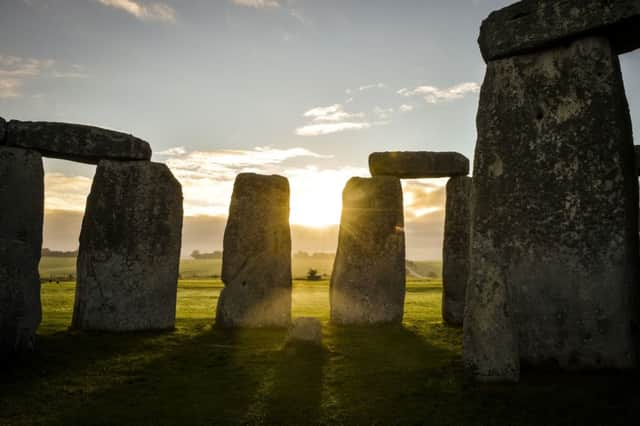Scientists unearth evidence of earliest prehistoric parties


A study has unearthed evidence of the earliest large-scale events in Britain, which saw people and animals travelling hundreds of miles for prehistoric feasting rituals.
The survey is the most comprehensive to date, having examined the bones of 131 pigs, thought to have been the main source of meat for the feasts.
Advertisement
Hide AdAdvertisement
Hide AdFour West Country sites that served the monuments of Stonehenge and Avebury – Durrington Walls, Marden, Mount Pleasant and West Kennet Palisade Enclosures – are said to have hosted pan-British events at which animals from as far afield as North East England were consumed.
The researchers believe it may have been important for those attending to contribute animals raised locally at their homes.
Until now, the origins of the people who took part in rituals at these megalithic monuments and the extent of the population’s movements at the time have been enigmas in British prehistory.
Dr Richard Madgwick, from Cardiff University, said: “This study demonstrates a scale of movement and level of social complexity not previously appreciated.
Advertisement
Hide AdAdvertisement
Hide Ad“These gatherings could be seen as the first united cultural events of our island, with people from all corners of Britain descending on the areas around Stonehenge to feast on food that had been specially reared and transported from their homes.”
Representing great feats of engineering and labour mobilisation, the Neolithic complexes of southern Britain were the focal point for great gatherings in the third millennium BC.
Pigs were the main animal used for food and they provide the best indication of where the people who feasted at the sites came from as almost no human remains have been recovered.
Dr Madgwick said: “Arguably the most startling finding is the efforts that participants invested in contributing pigs that they themselves had raised.
Advertisement
Hide AdAdvertisement
Hide Ad“Procuring them in the vicinity of the feasting sites would have been relatively easy. Pigs are not nearly as well-suited to movement over distance as cattle, and transporting them would have required a monumental effort.
“This suggests that prescribed contributions were required and that rules dictated that offered pigs must be raised by the feasting participants, accompanying them on their journey.”